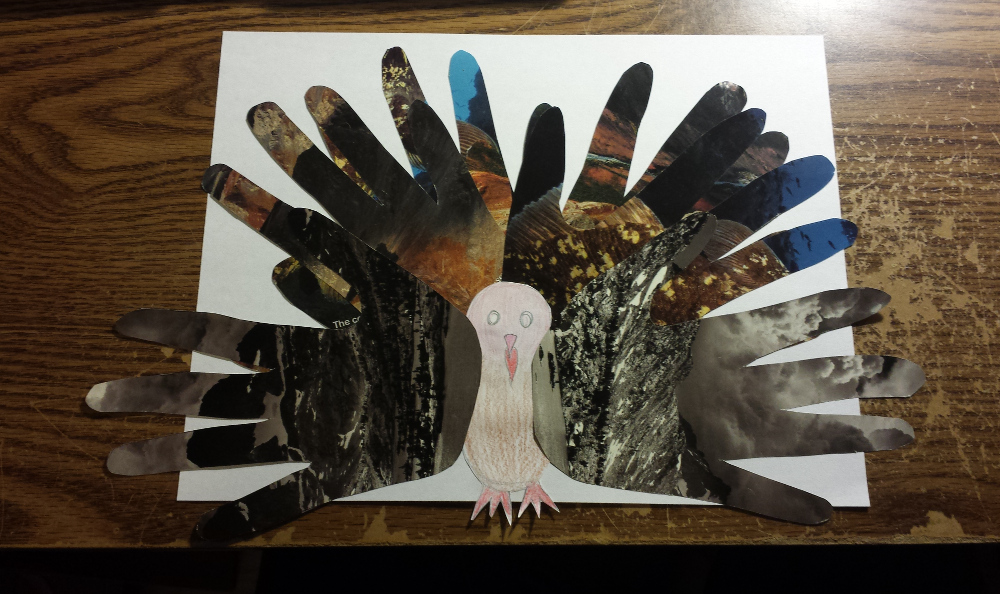With Thanksgiving approaching in a few weeks, I was reminded of the turkeys I made in elementary school by tracing my hand. Do you remember doing this? In addition to turkeys, this technique can be used to illustrate a variety of birds.
Turkeys
Trace your hand on construction paper of different colors, patterned cardstock, or magazine pages multiple times. Once you’ve cut out the hands, you’ve got lots of tail feathers you can overlap! If you have access to hands of different sizes, you can create a cool layering effect by overlapping smaller hands over bigger hands. On a separate sheet of paper, draw a shape that resembles a circle and a vertically elongated oval overlapping each other for the turkey’s body. Add details to this shape, color if you’d like, and cut the shape out. Glue the hands and this shape to a separate sheet of paper. Let me know if you have any questions!

Here are some interesting facts about turkeys:
- Only male turkeys have the distinctive features commonly associated with the bird: ruffled feathers, fanlike tail, bare head, and bright beard.
- Males puff up their body feathers, display their tails in a fan shape, strut slowly, and gobble to attract females.
- Females lay 4 to 17 eggs and feed their chicks after they hatch for a few days.
- Multiple family groups of chicks and their mother combine to form large flocks of young turkeys with two or more adult females.
- Males form all-male flocks outside of the breeding season.
- Turkeys can swim if they need to by tucking in their wings, spreading their tails, and kicking.
- Turkeys eat nuts, seeds, fruits, insects, and salamanders.
- They prefer forests but are also found in grasslands and swamps.
- They were one of two bird species native to the Americas when Europeans arrived, the other being the Muscovy duck.
For more information about turkeys, visit:
Cornell Lab of Ornithology
National Geographic
Peacocks
Consider making peacocks. Click on the images in the slideshow to access the original link!
[metaslider id=8774]
Flamingos
How about elongating and curving the thumb to make a flamingo’s long neck like in a post on Crafty Morning?
Owls
Cindy shows a creative idea on My Creative Life. I love how she uses the fingers to make the wings and tail feathers!
Pigeons
Don’t forget about the iconic pigeon! Ashley of Life with Moore Babies used the thumb as the neck of the bird and cut the head from a separate sheet of paper.
Even though some of the above pictures show handprints, you can still trace your hand as a base for these illustrations. If you know a creative way to use your hand as a foundation in a craft, let me know in the comments!
Crafting into the sunset,
Virginia






